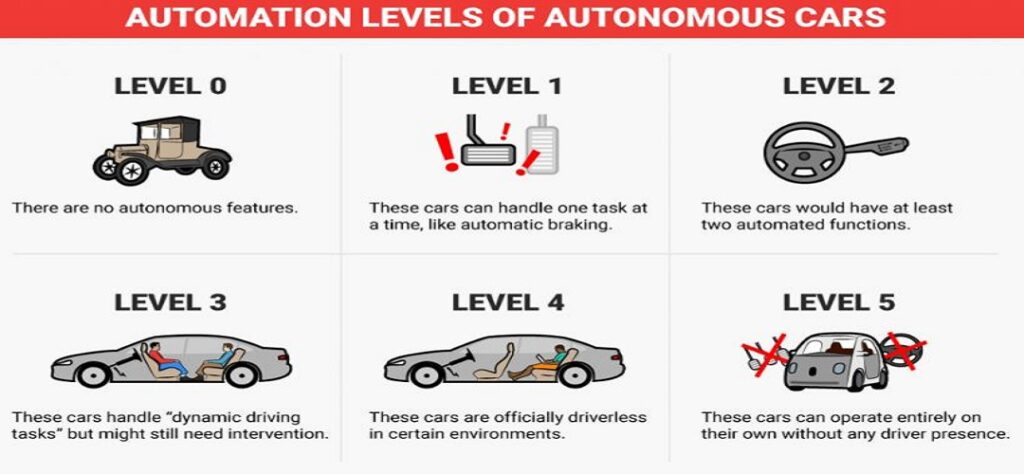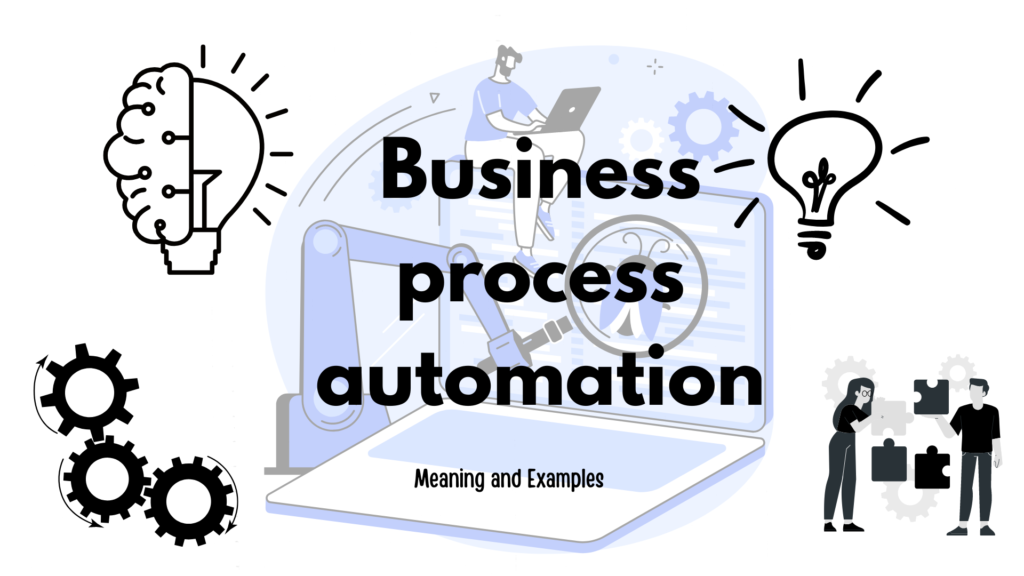Levels of Automated Driving: Driving that is automated is not a binary decision. Not at all. Active safety and self-driving features are being progressively added to cars by manufacturers.
These characteristics typically fit into logical categories depending on how they mix steering and longitudinal control (acceleration, braking, and longitudinal control) (called lateral control).
Despite having the exact same capability, several characteristics correspond to varying levels of driving automation because of how much the vehicle is controlled by humans versus autonomous systems.
Although there are many regions of overlap between features, the Society of Automotive Engineers (SAE) created a scale from zero to five that is considered industry standard to reflect this continuum. These are the general meanings of those levels:

Level 0: No Automation.
The driver is entirely in charge of managing the vehicle, including steering, braking, accelerating, and decelerating. Safety features like backup cameras, blind spot warnings, and collision warnings are possible in Level 0 automobiles.
Because it does not act continuously, even automatic emergency braking, which applies forceful braking in the case of an impending collision, is categorized as Level 0.
Level 1: Driver Assistance.
At this stage, the autonomous systems partially but gradually take over driving the car in certain circumstances. Adaptive cruise control, which manages acceleration and braking commonly in highway driving, is an illustration of Level 1 automation. Drivers have the option to depress the pedals, depending on the functionality.
Level 2: Partial Automation.
Because the vehicle is more aware of its surroundings at this level, it can carry out more difficult tasks that combine steering (lateral control) with accelerating and braking (longitudinal control).
Level 2+: Advanced Partial Automation.
Although Level 2+ is not an official SAE level, it does represent a significant category that offers superior performance at a cost that customers can afford.
The vehicle systems do some tasks at Level 2+ where the driver is still required to keep an eye on the car and be prepared to take over if necessary.
(Level 3 represents a huge technological advance in contrast since it is the first level at which drivers can put their minds off of driving, sometimes known as “mind off.”
Level 3 requires far more sophisticated software and hardware since the vehicle must be able to safely stop in the case of a failure.)
Highway assistance and traffic congestion help are two examples of Level 2+. There is a lot of consumer interest since it allows drivers to relax and enjoy themselves by taking their hands off the wheel and looking away from the road ahead for a short while.
Level 3: Conditional Automation.
Drivers can stop operating a vehicle at Level 3, but only under certain circumstances. Conditions could be restricted to specific vehicle speeds, types of roads, and weather patterns.
However, this is often regarded as the first step toward autonomous driving because drivers can divert their attention to anything else, such as glancing at a phone or newspaper. But when the system calls for it, the driver is supposed to take over. the driver does not.
For instance, functions like traffic jam pilot allow drivers to unwind while the vehicle handles all acceleration, steering, and braking. When a car passes through congestion in stop-and-go traffic, the vehicle sends the driver a warning to restore control as the vehicle’s speed rises.
The car must also keep an eye on the driver’s condition to make sure that they regain control and be able to safely stop if they don’t.
Level 4: High Automation.
The vehicle’s autonomous driving system is now capable of managing all driving duties for common routes and conditions specified within its operational design domain, as well as monitoring the driving environment (ODD).
If, for example, there is an environmental condition that calls for a human being to be in control, such as thick snow, the vehicle may warn the driver that it is approaching its operational limits. The vehicle will automatically lock if the driver doesn’t respond.
Level 5: Full Automation.
Fully autonomous cars are Level 5-capable. No one is necessary to operate the vehicle. In fact, Level 5 vehicles may be devoid of a steering wheel and stop and gas pedals altogether.
Level 5 vehicles might be equipped with “smart cabins” that allow passengers to make voice commands to select a destination or control cabin settings like the temperature or preferred media.
The SAE updated their taxonomy in April 2021 to make it clear that Levels 0–2 are “driver assistance features” because the driver is still very much involved in the operation of the vehicle, but Levels 3-5 are “automated driving features.”
As vehicles increasingly assume functions formerly under the driver’s control, each level of automation necessitates more sensor layers. A Level 1 vehicle, for instance, might just have one radar and one camera.
A Level 5 vehicle will need complete 360-degree sensing across many sensor types in order to be able to traverse any situation it comes across.
Almost every new car sold in the U.S. today, according to Consumer Reports, “falls into a murky region from Level 0 to Level 2.”
However, many of today’s automobiles have some automated control of the steering wheel, brakes, and/or accelerator, as evidenced by adaptive cruise control, lane departure alarms, and/or automatic lane shifting.
Level 4 and Level 5 cars aren’t yet accessible for the general public to purchase.
While fully autonomous driving is undoubtedly a few years away, automakers add more cutting-edge safety technologies each year, lowering collisions and making drivers more at ease with the idea of ever removing their hands entirely from the wheel.
To learn more about automation from automate busyness, explore our blogs and subscribe to our Newsletter.
ALSO READ
You may also like our other related articles on automation :


